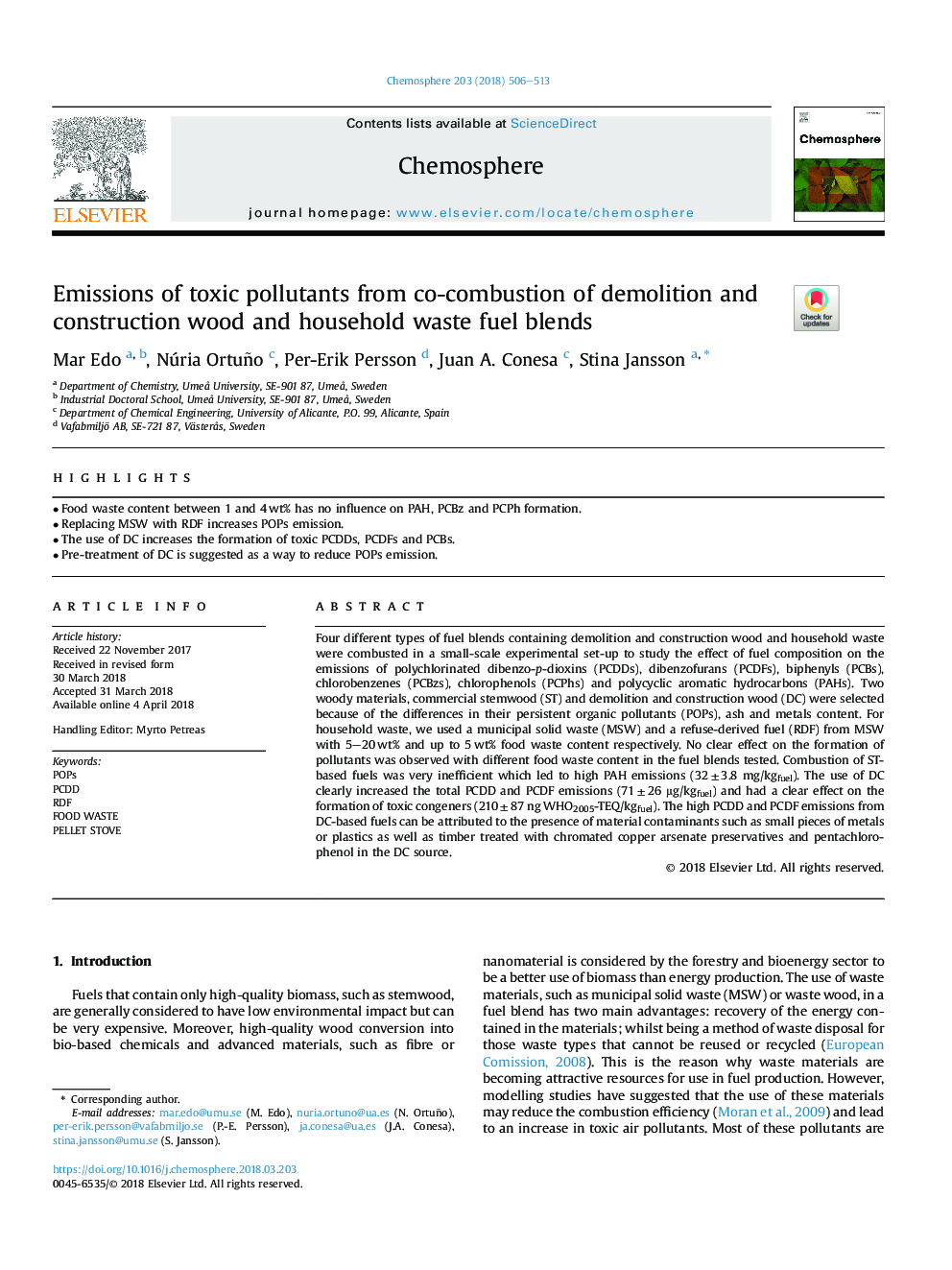| کد مقاله | کد نشریه | سال انتشار | مقاله انگلیسی | نسخه تمام متن |
|---|---|---|---|---|
| 8851230 | 1618768 | 2018 | 8 صفحه PDF | دانلود رایگان |
عنوان انگلیسی مقاله ISI
Emissions of toxic pollutants from co-combustion of demolition and construction wood and household waste fuel blends
ترجمه فارسی عنوان
انتشار آلاینده های سمی از احتراق مشترک تخریب و احداث چوب و سوخت های زباله های خانگی
دانلود مقاله + سفارش ترجمه
دانلود مقاله ISI انگلیسی
رایگان برای ایرانیان
کلمات کلیدی
موضوعات مرتبط
علوم زیستی و بیوفناوری
علوم محیط زیست
شیمی زیست محیطی
چکیده انگلیسی
Four different types of fuel blends containing demolition and construction wood and household waste were combusted in a small-scale experimental set-up to study the effect of fuel composition on the emissions of polychlorinated dibenzo-p-dioxins (PCDDs), dibenzofurans (PCDFs), biphenyls (PCBs), chlorobenzenes (PCBzs), chlorophenols (PCPhs) and polycyclic aromatic hydrocarbons (PAHs). Two woody materials, commercial stemwood (ST) and demolition and construction wood (DC) were selected because of the differences in their persistent organic pollutants (POPs), ash and metals content. For household waste, we used a municipal solid waste (MSW) and a refuse-derived fuel (RDF) from MSW with 5-20â¯wt% and up to 5â¯wt% food waste content respectively. No clear effect on the formation of pollutants was observed with different food waste content in the fuel blends tested. Combustion of ST-based fuels was very inefficient which led to high PAH emissions (32â¯Â±â¯3.8 mg/kgfuel). The use of DC clearly increased the total PCDD and PCDF emissions (71â¯Â±â¯26 μg/kgfuel) and had a clear effect on the formation of toxic congeners (210â¯Â±â¯87â¯ng WHO2005-TEQ/kgfuel). The high PCDD and PCDF emissions from DC-based fuels can be attributed to the presence of material contaminants such as small pieces of metals or plastics as well as timber treated with chromated copper arsenate preservatives and pentachlorophenol in the DC source.
ناشر
Database: Elsevier - ScienceDirect (ساینس دایرکت)
Journal: Chemosphere - Volume 203, July 2018, Pages 506-513
Journal: Chemosphere - Volume 203, July 2018, Pages 506-513
نویسندگان
Mar Edo, Núria Ortuño, Per-Erik Persson, Juan A. Conesa, Stina Jansson,
